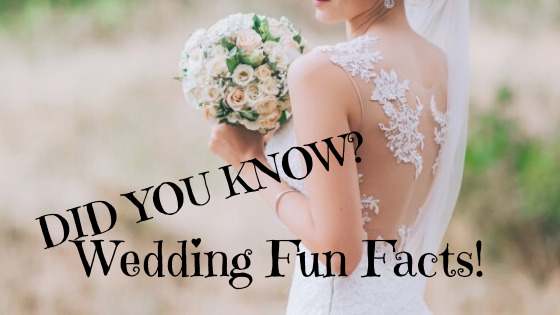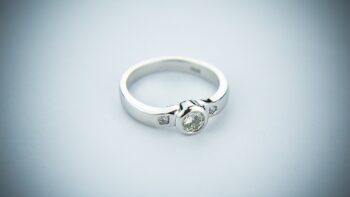Facts About Weddings are not what people think about when planning a wedding. They are thinking about the guests, food, and party! Then there is also the rings that can be a chore to find. So, we thought we would come up with some of the more fun facts about weddings.
While weddings happen in every country in the world, most are very different from each other. Each culture has their own traditions and ceremonies that make up a wedding. Some last an hour, some last for a week. Wedding practices in other countries is a post unto itself. So, in this post, we will discuss interesting thigs about american weddings.
Wearing A White Wedding Dress Was Started By British Queen
The trend of brides wearing white can be traced back to Queen Victoria. During her wedding to Prince Albert in 1840, she chose to wear a white wedding dress, which was considered unconventional at the time. This decision had a significant impact on popularizing the idea of brides wearing white. Prior to Queen Victoria, brides would typically wear dresses in various colors, including black. However, Queen Victoria’s choice of a white wedding dress set a new standard and became a symbol of purity and elegance for brides around the world.
Queen Victoria’s white wedding dress was widely publicized and admired, leading to a surge in popularity for white wedding dresses among the upper classes. The trend quickly spread to other social classes and became a symbol of wealth and status. The association of white with purity and innocence further solidified the tradition of brides wearing white.
Today, the tradition of brides wearing white continues to be a popular choice for many brides. While there are no strict rules or requirements, the influence of Queen Victoria’s choice of a white wedding dress has had a lasting impact on wedding traditions worldwide. Whether it is a traditional white gown or a modern interpretation, the trend of brides wearing white remains a timeless symbol of love and celebration.
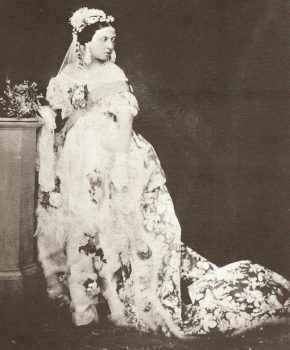
How To Accessorize???
The tradition of wearing “something old, something new, something borrowed, and something blue” in weddings can be traced back to an old English rhyme. The rhyme is believed to have originated in the Victorian era, but its exact author is unknown. The tradition symbolizes different elements of good luck and prosperity for the bride on her wedding day.
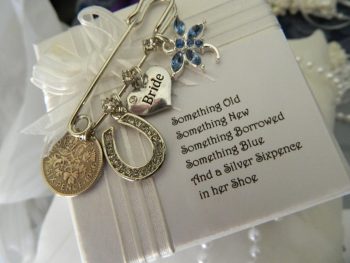
Facts About Weddings – First Dance And Cutting Of The Cake
The first dance and wedding cake cutting are two cherished moments in a married couple’s wedding day. These traditions hold special significance and symbolize the beginning of their journey together.
During the first dance, the couple takes center stage on the dance floor, surrounded by their loved ones. The choice of song is often a reflection of their relationship and holds sentimental value. As they sway and twirl, the couple shares an intimate moment, lost in each other’s eyes. It is a beautiful sight to witness their love and commitment on display for all to see.
Following the first dance, the couple proceeds to the cake cutting ceremony. The wedding cake, a focal point of the reception, is a symbol of sweetness and unity. With a shared knife in hand, the couple cuts the first slice together, signifying their willingness to share life’s joys and challenges. This tradition is often accompanied by cheers and applause from the guests, celebrating the couple’s union.
The first dance and wedding cake cutting are cherished traditions that mark the beginning of a married couple’s journey together. These moments are filled with love, joy, and the promise of a lifetime of happiness.
Facts About Weddings – Bearers Of The Rings
Ring bearers also first appeared in weddings during the Victorian era, which it seems had a large impact on US weddings. This tradition originated in England and quickly spread to other countries. The role of the ring bearer is to carry the wedding rings down the aisle and present them to the couple during the ceremony. Typically, the ring bearer is a young boy, often a family member or close friend of the couple. The presence of a ring bearer adds a charming and symbolic element to the wedding ceremony, symbolizing the future of the couple’s union.

Facts About Weddings – Honeymoons Are Not New
The concept of the honeymoon can be traced back to ancient civilizations. In ancient Babylon, for example, it was customary for the bride’s father to provide the newlywed couple with a month’s supply of mead, a honey-based alcoholic beverage. This was believed to promote fertility and ensure a happy marriage. Similarly, in ancient Greece, newly married couples would drink honeyed wine for a month after their wedding, as it was believed to bring good luck and sweeten their union. Over time, the idea of a honeymoon evolved to include a period of rest and relaxation for the newlyweds after the wedding festivities. Today, the honeymoon is seen as a special time for couples to celebrate their love and create lasting memories together.
A Single Company Is Responsible The Diamond Engagement Ring Thing
The diamond engagement ring was not invented by a single individual. Its origins can be traced back to ancient civilizations such as the Egyptians and Romans, who used rings as symbols of love and commitment. However, it was in the late 19th century that the diamond engagement ring as we know it today became the standard. This was largely due to a highly successful marketing campaign by the diamond company De Beers, which emphasized the importance of diamonds in expressing love and commitment. After WWII, they came up with the idea that a diamond is forever and pushed the spending of 2 months salary on a diamond engagement ring. Today, the diamond engagement ring remains a widely recognized symbol of love and is a popular choice for couples around the world.
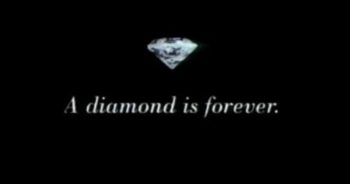
The Throwing Of The Bouquet Has Been Done For A Long Time
The tradition of the bride throwing the bouquet has its origins in ancient times. It is believed to have started in England during the 14th century. In those days, it was customary for wedding guests to try to obtain a piece of the bride’s dress or flowers as a symbol of good luck. To escape the crowd, the bride would throw her bouquet and run away. Over time, this practice evolved into the modern tradition of the bride tossing her bouquet to a group of unmarried women, with the belief that the one who catches it will be the next to marry. Today, this tradition is still widely practiced in weddings around the world.
Why The Garter?
Brides wear a garter for various reasons. It is a traditional accessory that has been worn for centuries. It symbolizes the bride’s transition from maidenhood to marriage. Brides began wearing and tossing garter belts in the 14th century. The tradition originated in Europe and was believed to bring good luck. The garter belt was worn by the bride as a symbol of her virginity. Consequently, it was often removed by the groom during the wedding reception. It was then tossed to the single men in attendance, similar to the bouquet toss for single women. This tradition continues to be a popular and playful part of many weddings today.
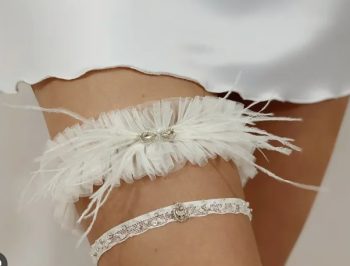
Flower Girls Are Roman
Flower girls first appeared in weddings during ancient Roman times. They were young girls who would walk ahead of the bride, scattering flower petals along the path. This tradition symbolized fertility and good luck for the couple. Over the years, the role of flower girls has evolved. However, they continue to add a charming and adorable touch to wedding ceremonies. Today, flower girls are typically young girls between the ages of three and eight, dressed in cute dresses and carrying baskets of flower petals. They walk down the aisle before the bride, spreading beauty and joy as they go.
Here Comes The Bride Is German
The song “Here Comes The Bride” was written by Richard Wagner, a German composer, in 1850. Here Comes The Bride became a tradition in the US in the late 19th century. It is commonly associated with weddings and is played as the bride walks down the aisle. The song’s origins can be traced back to the opera “Lohengrin” composed by Richard Wagner. Its popularity grew in the US due to its use in weddings and it has since become a beloved tradition.
Hopefully you learned a few things about weddings and why we do some of the things that we do.
